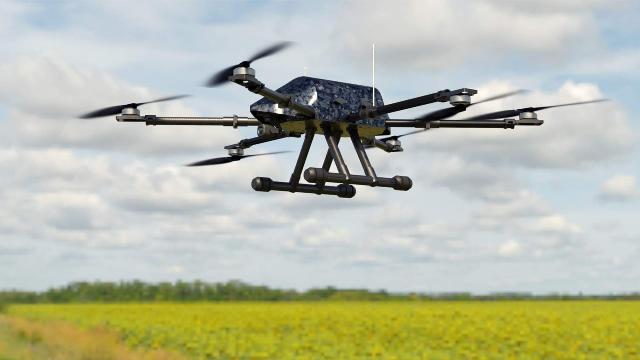The novelty was nicknamed "mini Baba Yaga" for its external similarity and similar functionality
Serial production of the MiS-35 attack and reconnaissance hexacopter has begun in Russia. This is a heavy drone that can drop ammunition and conduct reconnaissance. On the front line, where the device was tested, it has already been nicknamed "mini Baba Yaga" for its external resemblance to agricultural drones that use the APU. Experts note that such universal UAVs are now in demand on the line of combat contact, as they allow solving a number of military tasks.
Better than Baba Yaga
The MiS-35 UAV is designed according to the hexacopter scheme, that is, it is equipped with six electric propeller-driven units.
— We immediately created this drone from scratch to solve a wide range of tasks, — the chief designer of the MIS Design Bureau told Izvestia. — It turned out to be a drone that is somewhere between Mavik and Baba Yaga in size. This gives us less visibility — visual thermal and noise. It is smaller than the Baba Yaga, but at the same time more load-lifting than the Mavic.
The MiS has already been tested in the area of the military special operation.
— We designed the drone for dropping 82 mm mines and PG-7 ammunition - this is a cumulative charge from an RPG-7, — explained the chief designer of the MiS Design Bureau. — This is his main weapon. On the front line, of course, they hang a variety of ammunition combinations — the main thing for the fighters is to solve the problem. They can equip at least five grenades. Its application depends on what the fighters have in their positions, and not on what we originally put into the design. This is a front-line feature.
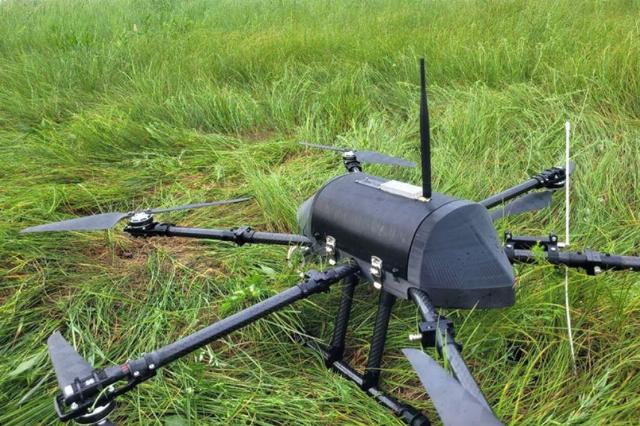
Hexacopter MiS-35
Image source: Photo: press service of KB MiS
The combat radius of the MiS-35 hexacopter when flying with a load of 3.5 kg is nine kilometers, with a maximum load capacity of 4.5 kg. In the reconnaissance mission mode, the MiS-35 can stay in the air for up to 45 minutes, in good conditions for 54 minutes. The drone accelerates to 63 km/h. With full load, the flight time of the drone is reduced to 30-32 minutes.
There is an analog camera with a six—fold zoom on board the MISA. A thermal imager can be used as additional equipment. This allows the drone to be used for reconnaissance at any time of the day.
— If necessary, the operator switches between conventional and thermal imaging cameras, — said the designer. — The camera itself is stabilized, that is, the drone can move as you like, but it will look at a given location.
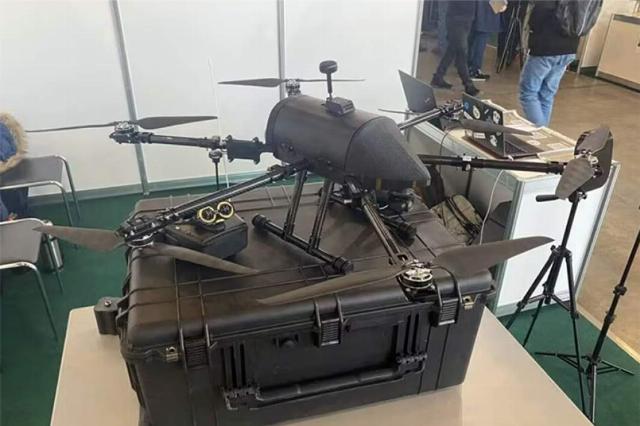
Hexacopter MiS-35
Image source: Photo: press service of KB MiS
An interference-proof communication channel is used for control. The control algorithm is similar to "Mavic" — it stabilizes, maintains altitude, that is, it is as friendly to the operator as possible.
It is not easy to destroy the MiS — you can hardly hear it in flight. The propeller group consists of highly efficient brushless motors and low-noise composite propellers.
A reliable "Guide Dog"
The Guide system allows the device to autonomously exit the EW range in the direction of the take-off point without using satellite navigation.
— The "guide" does not return exactly home without GPS, but leads away from the EW complexes in the direction of the house, — said the designer. — You're flying, you've lost your connection. Mavic will either land or climb indefinitely, the kamikaze drone will just fall, and ours will turn around and fly back until you intercept its signal again.
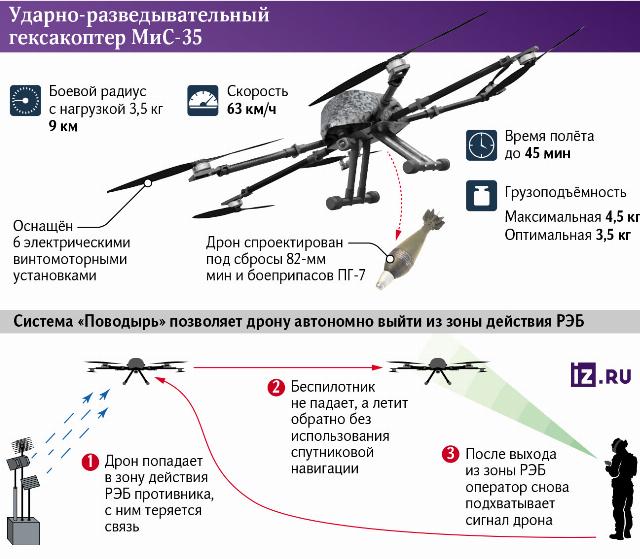
There are no unnecessary drones in the Russian army now, military expert Yuri Lyamin told Izvestia.
— Drones of this class have a very high level of losses, — he noted. — They usually hang or act on the front edge, fly into the enemy's rear, so they are often shot down. For this reason, many similar devices are needed and different. 4.5 kg is a fairly common payload. Such a drone can be used for a variety of purposes. For example, in order to drop bombs on enemy positions. You can drop mines. For large anti-tank mines, its carrying capacity is too small, but it will deliver small anti-personnel mines to the right point. In addition, he will perform intelligence functions. This is a fairly versatile device. In the conditions of electronic warfare waged by the enemy, the abundance of such drones will complicate his actions.
Piranhas on the front line
Drones similar in functionality are already being produced in Russia. Earlier, Izvestia wrote that an improved version of the Piranha FPV drone, which at one time destroyed the first American Abrams tank, appeared in the combat zone. The new UAV is called Piranha-13. He can deliver water, food, ammunition to remote positions and drop various ammunition and carry out mining.
One of the tasks that an FPV drone can solve is remote mining. It can operate on supply routes and enemy equipment transfer routes.
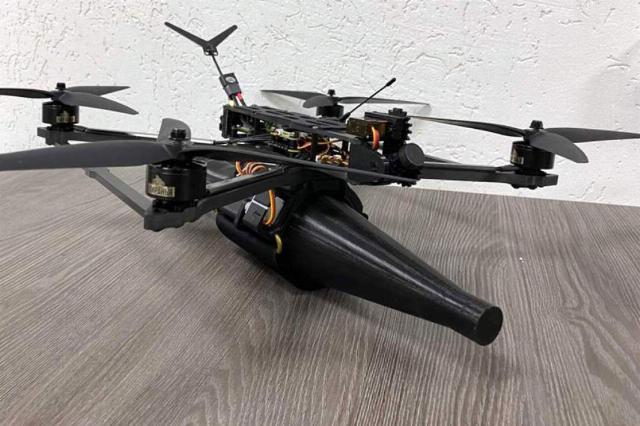
The Piranha FPV drone
Image source: Photo: press service of SKB Piranha
The development of Piranha-13 was carried out for more than six months. Thanks to eight engines and a properly selected propeller group, the device has a load capacity of up to 15 kg. This is how the new drone differs for the better from the previous Piranha-7 and Piranha-10 models. They have this indicator lower — 2.5 and 4.5 kg, respectively.
The Thirteenth is equipped with the same systems as its predecessors, but it also has a number of additional ones. For example, a quick-release battery mount, a camera stabilization system and the possibility of installing several for multispectral operation, as well as a device stabilization system in case of failure of one or two engines.
Bogdan Stepovoy
Roman Kretsul
Andrey Fedorov
